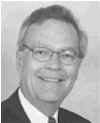|

|
Timing
Is Everything
Stoplights
in Virginia
Stoplights
have a long history in the English-speaking world.
On December 10, 1868, a railway engineer named J.P.
Knight installed the first set outside the
British Houses of Parliament. The lights resembled
the signals at 19th-century railway crossings with
arms and red and green lights for use at night. A
lever turned the gas lantern so the appropriate
light faced traffic. Unfortunately, the device
exploded less than a month later and injured the
policeman operating it.
We
Americans are credited with the invention of the
electric traffic light. A policeman named Lester
Wire is remembered for inventing the first
red-green electric light in 1912 in Salt Lake City.
By 1917, the first interconnected system of
stoplights connected six intersections in that same
city. They were controlled simultaneously from a
manual switch. The first four-way, three-color
traffic signal was invented by another policeman, William
Potts, in Detroit in 1920. Two years later, the
first automated controlled system was introduced in
Houston, Tex.
Today,
the Institute
of Traffic Engineers estimates that there are
300,000 traffic signals in the United States. The
Institute encourages states and other jurisdictions
to do traffic use studies at least once a year to
readjust timing that will keep traffic flowing and
prevent accidents. In 2006, the Traffic
Engineering Division of the Virginia Department
of Transportation (VDOT) conducted traffic volume
studies on 7,549 sections of road in the
Commonwealth, with the average daily volume ranging
from 56,000 vehicles per day in one stretch of
Northern Virginia road to 500 per day in a more
rural area of the state.
Stoplights
are popularly considered the solution to reducing
accidents at intersections, but in fact, that is not
always the case. For example, while stoplights can
reduce right-angle collisions they do not relieve
rear-end accidents, reports VDOT.
They also can produce long delays, unnecessary
travel on alternative routes and more congestion.
Drivers in Northern Virginia and other congested
areas of the state are quite familiar with that
phenomenon.
For
example, in 1997, then-Governor George Allen
officiated at the opening of an overpass at Route 58
and Route 35 in Southampton County. The overpass
eliminated two traffic signals that had stopped
traffic too abruptly on a 55-mile-per-hour-section
of road that carried travelers from Hampton Roads to
the entrance to I-95 in Emporia. (“Overpass
Now Spans Dangerous Intersection,” The
Virginian-Pilot, July 12, 1997.)
To
determine whether a light is needed at an
intersection, most traffic engineers use the Manual
on Uniform Traffic Control Devices, a national
standard developed by the Federal Highway Safety
Administration. Virginia’s Commonwealth
Transportation Board, a 17-member body, adopted
the standards in 2005. The federal document outlines
traffic survey requirements that must be met to make
a decision to install a light. Using federal, as
well as state guidelines, VDOT evaluates the number
of vehicles and pedestrians that use an
intersection, the physical makeup of the
intersection, roadside development, traffic delays
during peak hours, average vehicle speeds, future
road construction plans and the number of types of
accidents that have occurred there.
As
anyone knows, who has traveled a stoplight-ridden
route, the timing of lights is essential to a smooth
commute. The purpose of signal timing is to respond
to the demands of all types of vehicles, bicycles
and pedestrians. Effective signal timing also helps
fuel consumption and air pollution.
In
2005, the National
Traffic Operations Coalition (NTOC) issued its
first National Traffic Signal Report Card. The
report received extensive media attention when it
gave the nation’s states, cities and counties a D-
on traffic signal timing. It issued a new report in
2007, which raised the grade to a D. Many areas in
Virginia have sophisticated traffic control timing
systems that rank much higher, but the NTOC argues
there is always more to be done. The organization
estimated that poor traffic signal timing accounts
for 300 million hours of delay on major roadways in
the U.S. each year.
Virginia
uses two types of signals – fixed time and traffic
responsive. Fixed time traffic lights give the green
light to different approaches of an intersection for
a predetermined amount of time. Some can be set to
change to different times during peak hours. Traffic
responsive signals use sensors buried below the
pavement to detect the number of vehicles and adjust
the length of the green light to let as many as
possible go through an intersection. In fact, the Commonwealth
and Virginia Tech built the first roadbed in the
nation to test such “intelligent transportation
design” as part of a new highway between
Blacksburg and I-81. Virginia now even uses solar
power to weigh and classify vehicles as they cross
pavement sensors.
Such
new technology often results in the need to discard
outdated equipment. Two municipalities – Virginia
Beach and Norfolk – found creative solutions. In
1995, they donated 80 outdated traffic signals,
along with the controls and spare parts, to Costa
Rica. The country is the size of West Virginia, but
had only 600 signals at the time. For comparison,
the city of Virginia Beach had 300 just of its own.
Signals were so scarce that the Costa Rican
government determined where to put signals by the
number of fatal accidents at an intersection. (“Donated
Stoplights Are Godsend to Bare Costa Rican Streets,”
The Virginian-Pilot, August 11, 1995).
So
now, streets are safer and traffic smoother in San
Jose, thanks to the generosity of Virginians.
NEXT:
Birdies, Bogies and the Back Nine: Golfing in the
Old Dominion
--
December 27, 2007
|
|
